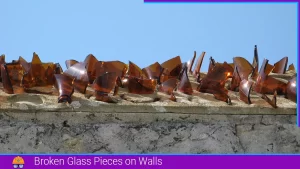There are several types of stones available in nature which may be suitable for construction works. Top-quality stones are used in construction works such as for rubble masonry, pavement, flooring, cladding, roof covering, bridge piers and river walls. Some of the common types of stones that are used in construction are discussed in this article.
Types of Stones Used for construction works
All three classifications of rocks (igneous, sedimentary and metamorphic rock) are used for construction works. Some of the natural stone that is popularly used in construction around the world are as follow:
Granite:
Granite is an igneous rock with a fine and coarse-grained crystalline structure. They are hard and durable, with specific gravity ranging from 2.6 to 2.7 and compressive strength ranging from 100 to 250 N/mm2. Granite can be easily polished and often used in construction for their strength, resistance to weathering, and attractive appearance.
It is commonly used for building facades, flooring, countertops, and monuments. Granites that have been polished are commonly employed as table tops, cladding for columns, and wall coverings. Additionally, they are utilized as coarse aggregates in concrete applications.
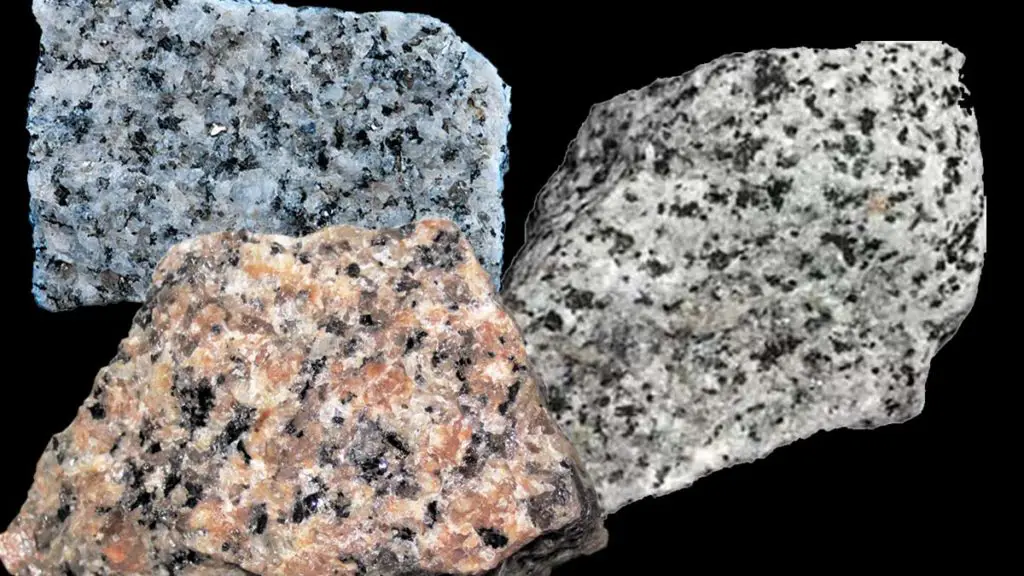
In the past, Italy, the USA, and Canada were well-known sources of granite, but nowadays, China, India, as well as various locations in Africa and South America, have emerged as major global suppliers of this natural stone. Granite is available in most of India including Tamil Nadu, Karnataka, Rajasthan, Uttar Pradesh, Madhya Pradesh, Kerala and Punjab.
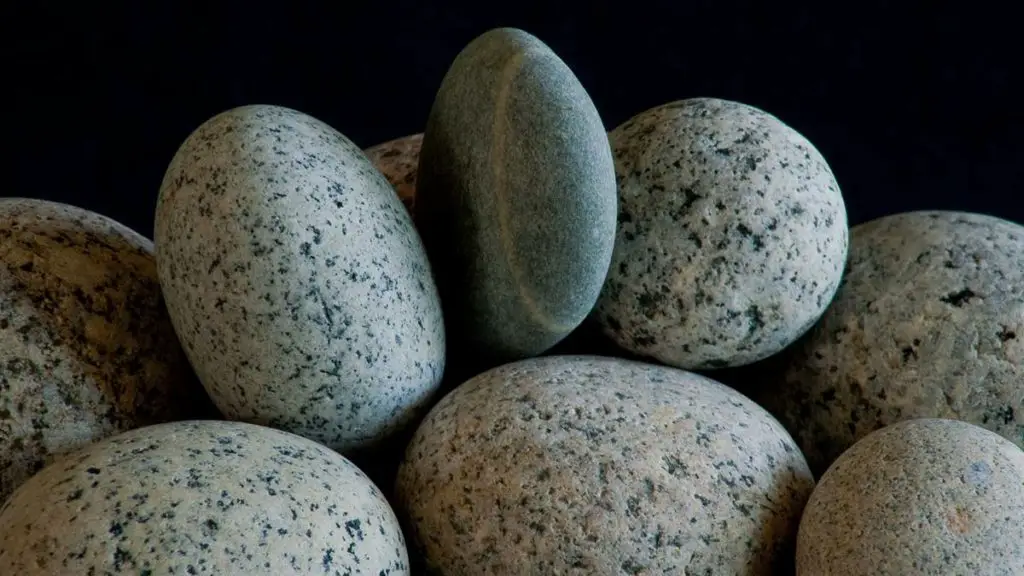
Basalt:
Basalt also belongs to an igneous rock that is commonly used in construction for its strength and durability. These rocks are typically medium to fine-grained and compacted. It is hard, tough and durable and is available in different colours. According to Bhavikatti 2010, the weight of Basalt varies from 18 kN/m3 to 29 kN/m3 and exhibits compressive strength from 200 to 350 N/mm2.

They are also commonly used for rubble masonry in the construction of bridge piers, river walls, and dams, as well as for pavements. Basalts are used as road metals, and aggregates for concrete. Basalt is available in places like Bihar, Gujarat, Andhra Pradesh and Maharashtra in India.
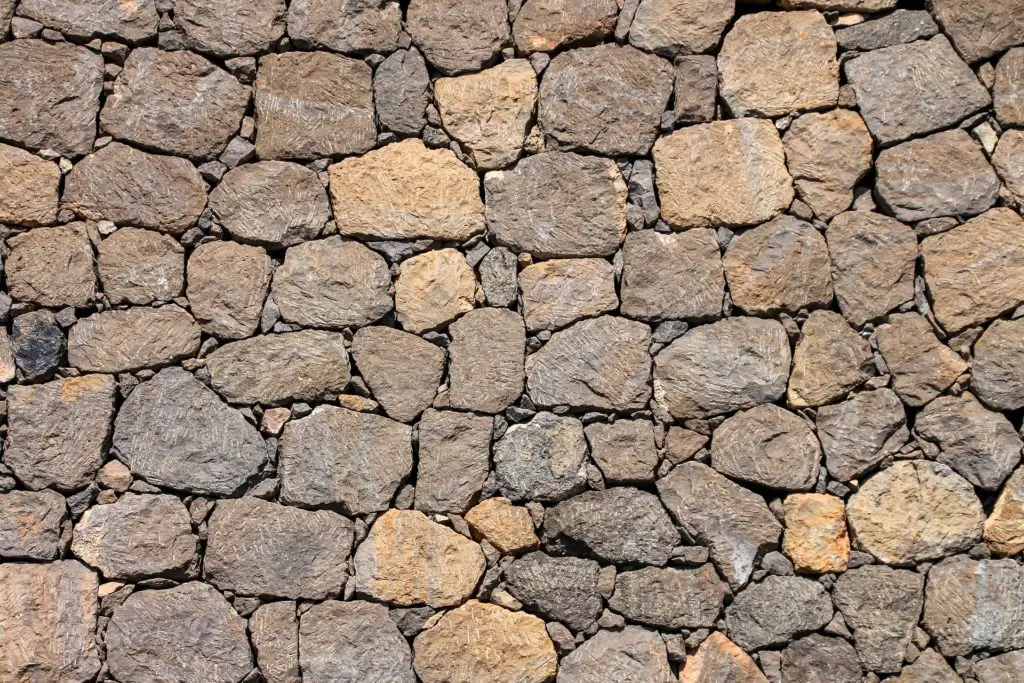
Marble:
Marble is a metamorphic rock with aesthetic appeal that is prized for its beauty and elegance. Due to its highly crystalline structure, it can be easily polished and cut with a saw. Additionally, it is available in different colours. It has a specific gravity of 2.65 and compressive strength ranging between 70–75 N/mm2.
Marble is used for interior decoration and other ornamental works. It is commonly used in construction for flooring, countertops, wall cladding, and decorative elements. Marble comes in a wide range of colours and patterns, making it a popular choice for decorative applications. It is used for column facing, wall lining and flooring in the form of slabs and small pieces.
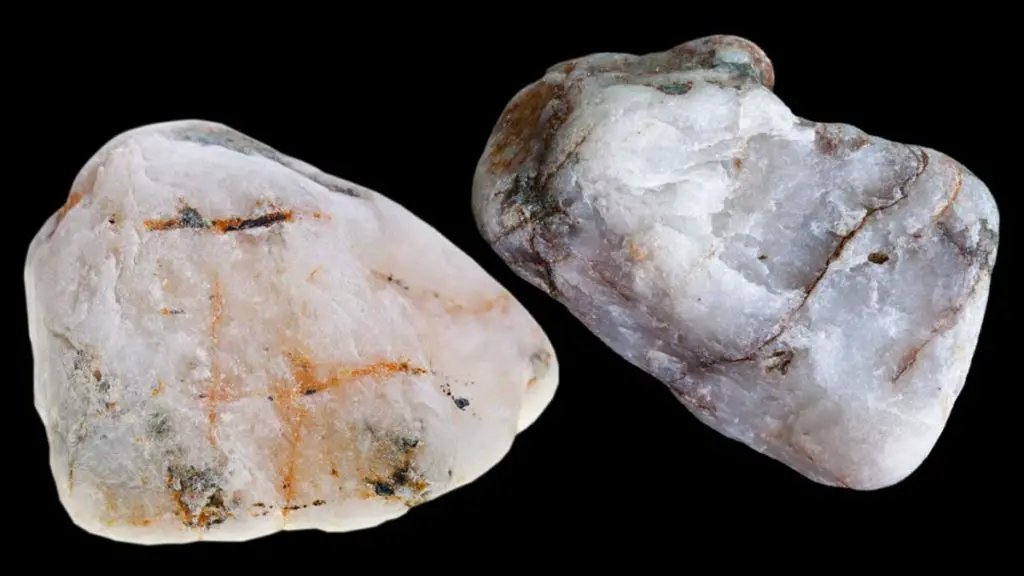
Sandstone:
Sandstone is a sedimentary rock that is known for its durability and natural beauty. It has low strength (Nataraajan, 1997) and compressive strength varies from 20 to 170 N/mm2. The specific gravity varies from 1.85 to 2.7. Its porosity varies from 5 to 25 per cent (Bhavikatti 2010). It is often used in construction for building facades, wall cladding, and paving stones.

Such types of rock are susceptible to weathering. The process of weathering can make sandstone unsuitable for use as building stones. In cases where heavy structures are required, it is preferable to use sandstones with silica cement.
Sandstone are easily workable and is used for different building works like facing works, carving works, steps, walls and columns. The common use of sandstone is in ashlar masonry.
Limestone:
Limestone is a sedimentary rock composed mainly of calcium and magnesium carbonates, with minor amounts of clay, sand, and organic material like seashells and fossils. When limestone contains about 95% calcium carbonate and 5% impurities, it is referred to as calcite limestone. On the other hand, if it consists of 60% to 80% calcium carbonate and 20% to 40% magnesium carbonate, it is known as dolomitic limestone. Dolomitic limestones are stronger than calcite limestone (Mehta, 2009, p.595).
In contrast to granite, limestone typically has a non-granular texture and a relatively consistent surface appearance. It is softer than marble and granite, making it easier to quarry, saw, and shape. Limestone comes in a range of colours from white to grey, and it does not possess the ability to take a high polish.
Calcium carbonate of limestone reacts with acids (citric acid in lemons, limes, oranges, etc., and acetic acid in vinegar and pickles), thus it is not recommended to use as kitchen or dining tabletops. Limestone is primarily used for manufacturing cement and lime (Nataraajan, 1997). It is often used for building facades, and flooring, and as a base material for roads and highways.

Slate:
Slate is a metamorphic rock formed by the morphosis of clay and mica sediments. It belongs to the argillaceous classification. They are composed of quartz, mica and clay minerals. The structure is fine-grained. They are characterized by distinct cleavage planes and have the tendency to split along the planes of the original bedding.
The specific gravity of the slate is 2.6 to 2.7. Compressive strength varies from 100 to 200 N/mm2. It is available in various colours, ranging from black to pink and light green.
Slale is used as roofing tiles in hilly areas, flooring and slabs, pavements etc. It is used as cladding and for dado. Slate occurs in Rajasthan, Andhra Pradesh, Maharashtra, Gujarat and Himachal Pradesh in India.
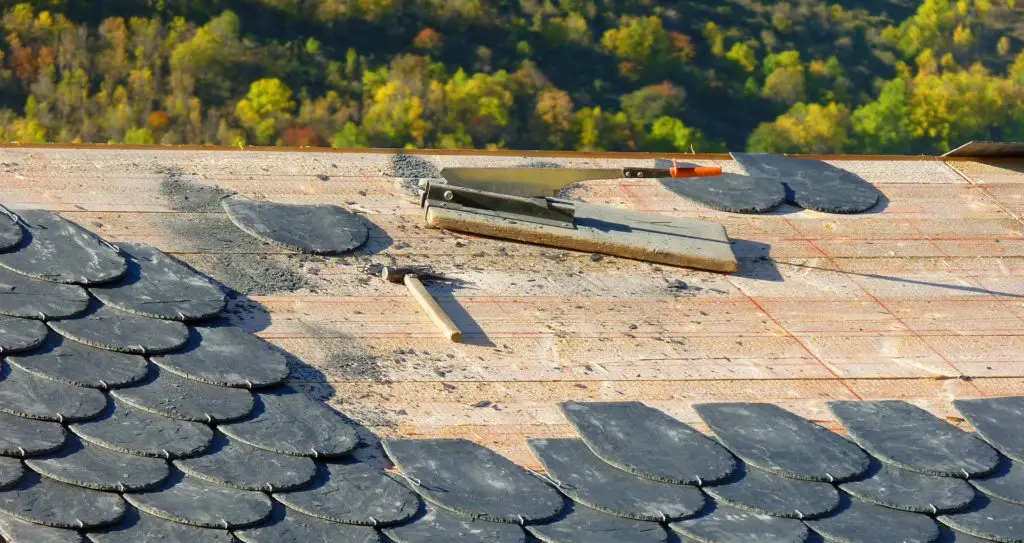
Gneiss:
This rock is classified as a metamorphic rock and exhibits a texture ranging from fine to coarse grains. It commonly displays alternate dark and white bands. Varieties of this rock are available in light grey, pink, purple, greenish grey, and dark grey colours. constituents. The specific gravity of this rock ranges from 2.5 to 3.0, and its crushing strength varies from 50 to 200 N/mm2.
Gneiss stones are not preferred for construction due to the presence of deleterious in them. They may be used in minor construction works, but harder varieties are more suitable for building purposes such as thin slabs for flooring and paving. They may be found in places like Andhra Pradesh, Bihar, Karnataka and Kerala in India.

Laterite:
This rock is classified as a sedimentary rock with a porous and spongy structure. It belongs to the argillaceous classification. It contains a high percentage of iron oxide, resulting in colours that may range from brownish, red, yellow, and brown, to grey. Its specific gravity is 1.85, and the compressive strength varies from 1.9 to 2.3 N/mm2. It can be easily quarried in blocks and gains strength with seasoning.
When used as a building stone, it is recommended to plaster its outer surface for better durability. It is mainly used for wall construction. Laterite is quarried from Karnataka, Odisha, Bihar and Kerala in India.

Quartzite:
Quartzite is a type of metamorphic rock that is formed from the metamorphism of sandstone. It is composed mostly of quartz grains that have been recrystallized under high pressure and high-temperature conditions, resulting in a dense and durable rock. Quartzite, which is predominantly composed of feldspar and mica in small quantities, typically has a fine to coarse-grained structure that is granular and textured.
It exhibits a compressive strength ranging from 50MPa to 300MPa. Quartzite is available in various colours, including white, grey, and yellowish hues. Quartzite is commonly utilized in construction as building blocks or masonry units, slabs, and aggregate for concrete.

Travertine:
Travertine is a sedimentary rock obtained from the sediments of limestone dissolved in spring water, particularly from hot springs (Mehta, 2009. p.595). Travertine is a type of stone that is characterized by its porous nature, resulting in slabs that often exhibit pitting and voids. Because of its porous structure, it does not take a polish and does not have the durability required to be used in thin slabs for exterior cladding.
However, the denser varieties, which take good polish, are referred to as travertine marble. Denser varieties can be polished to a smooth and shiny finish. It is often used for walls and interior decorations in public buildings (Encyclopedia Britannica. 2011). Travertine comes in a variety of colours from grey to coral red.
When used as a flooring material, its pits are filled with Portland cement (or epoxy) and ground smooth. It can be used as a thick block for the exterior wall.
Also, read: What is Lime Mortar?
FAQs:
Q: What are the different types of stones used in construction?
Answer: There are several types of stones used in construction, including:
1. Granite: A hard and durable stone with a crystalline appearance, often used for countertops, flooring, and monuments.
2. Basalt: A dark-coloured volcanic rock often used for the construction of roads, bridges, and buildings.
3. Marble: A metamorphic rock with a unique veined pattern, commonly used for flooring, countertops, and decorative purposes.
4. Sandstone: A sedimentary rock composed of sand-sized grains, used for building facades, walls, and paving.
5. Limestone: A sedimentary rock that is commonly used for building facades, flooring, and walls.
6. Slate: A fine-grained metamorphic rock used for roofing, flooring, and blackboards.
7. Gneiss: A metamorphic rock used for flooring and paving.
8. Laterite: This is a sedimentary rock used for masonry work in building and paving.
Q: Can natural stones be used for sustainable construction?
Answer: Yes, natural stones can be used for sustainable construction when sourced responsibly and used efficiently.
References:
- IS1134:1974. Method of Identification of Natural Building Stones. Indian Standard. BIS. New Delhi. 110002
- Mehta, M., Scarborough, W., & Armpriest, D. (2017). Building constructions: Principles, materials, and systems. Pearson Education, Inc.
- Punmia B.C.(June 2006). A Text Book of Building Construction. Laxmi Publication (P) Ltd.
- Nataraajan K.V (1997). Basic Civil Engineering.
- Bhavikatti, S. S. (2010). Basic civil engineering. IK International Publishing House Pvt. Ltd.
- Britannica, T. Editors of Encyclopaedia (2011, April 8). travertine. Encyclopedia Britannica. https://www.britannica.com/science/travertine
![]()





